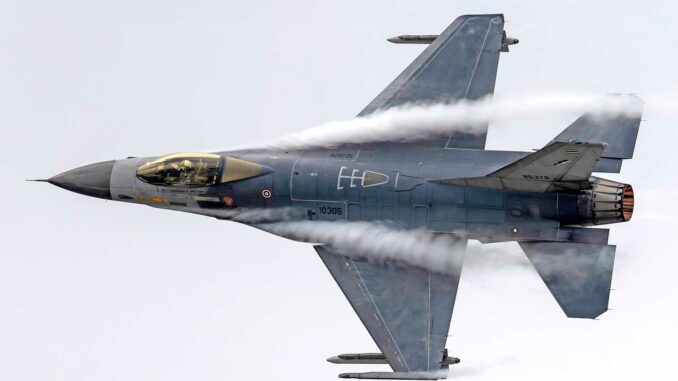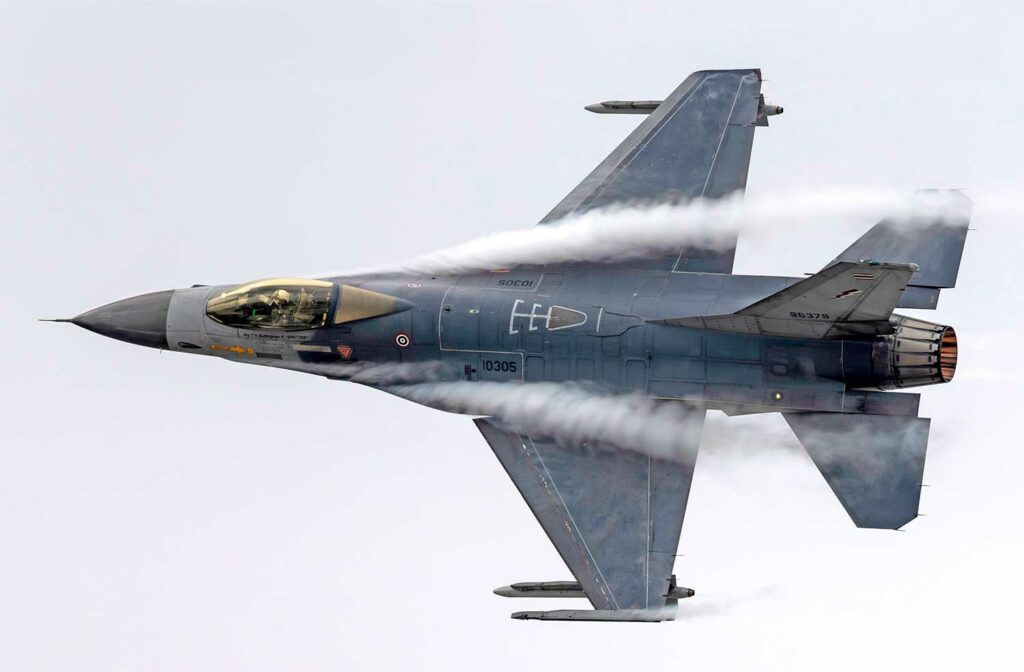
A Thai F-16 carried out a deadly strike in Cambodia, escalating border tensions and raising regional concerns.
A persistent regional crisis
On July 24, 2025, a Thai Army F-16 Fighting Falcon carried out an air strike on an area in northwestern Cambodia, killing two civilians and injuring several others. The operation, described by Bangkok as a response to Cambodian fire on a border post, represents a serious escalation in a long-standing but rarely deadly territorial dispute. Cambodia immediately denounced a violation of its sovereignty, calling it an unjustified attack on its territory.
The incident comes after several weeks of heightened tensions in Preah Vihear province, a region historically disputed between the two countries. Sporadic clashes between border patrols had already been reported since June, but the use of a fighter jet in an offensive strike marks a turning point. This development is worrying not only for Phnom Penh, but also for all regional partners, starting with ASEAN, whose mediating role is likely to be difficult.
Beyond the human losses and the diplomatic dimension, the use of an aircraft such as the F-16 in this context highlights Bangkok’s military choices and the limits of bilateral de-escalation mechanisms. This use of air power reveals a now accepted logic of power relations, the consequences of which could be long-lasting.
A long-standing border dispute that has never really been resolved
The territorial dispute between Thailand and Cambodia over the Preah Vihear area dates back to the colonial period. In 1962, the International Court of Justice awarded the Preah Vihear temple to Cambodia, but the exact demarcation of the surrounding border remained ambiguous. Since then, sporadic clashes have broken out, notably in 2008 and 2011, with exchanges of artillery fire and military casualties on both sides.
Since 2013, the two states had established bilateral military consultation mechanisms, with regular meetings between liaison officers and a demilitarized buffer zone. However, these arrangements have gradually eroded since the return to power of Thai generals with more assertive positions on sovereignty issues.
The regional political context is exacerbating these tensions. In Thailand, the military coalition in power since 2023 is attempting to strengthen its domestic legitimacy by taking a hard line on territorial issues. In Cambodia, the ruling party, which came to power in the 2023 elections, is also seeking to assert its authority in an uncertain post-Hun Sen context. This climate of mutual firmness, without active diplomatic channels, has automatically increased the risk of escalation.
On July 22, a Thai observation post was reportedly fired upon, according to military authorities. Two days later, the air force was mobilized. The use of an F-16, a versatile fighter jet originally designed for air superiority, is striking in a low-intensity border dispute. It highlights a deliberate political choice to use technological superiority as a tool for direct pressure.

An F-16 used in a targeted punitive operation
The F-16 Fighting Falcon, built by Lockheed Martin, is a single-engine fighter aircraft designed in the 1970s but extensively modernized since then. Thailand has around 50 of these aircraft, divided between the Takhli and Nakhon Ratchasima bases, with F-16A/B and MLU (Mid-Life Update) versions. These aircraft are equipped with AN/APG-68 radars, an inertial guidance system, and can carry precision-guided bombs such as the GBU-12 Paveway II, or AGM-65 Maverick air-to-ground missiles.
According to sources close to Thai defense circles, the aircraft used in the strike took off from Takhli and carried out a precision strike on a temporary structure in Cambodian territory, believed to be an “armed camp.” However, Cambodian civilian witnesses claimed that the site hit was a farming village with no military activity. The explosion reportedly destroyed a house and caused a fire in a nearby rice field.
The use of an F-16 in this configuration implies centralized military planning, with at least a green light from the Royal Thai Air Force command. This operation cannot be described as an isolated incident: it reflects a deliberate political and strategic decision. The operational cost of sending an F-16 equipped with guided bombs exceeds $70,000 per sortie, not including wear and tear on the airframe and JP-8 fuel consumption.
Furthermore, this strike is part of a rapid response doctrine that tends to supplant diplomatic mechanisms in low-intensity conflicts. It is a conscious choice that favors a visible military response to any form of incursion, real or perceived.
Immediate diplomatic reactions and tensions in the region
Cambodia immediately summoned the Thai ambassador to Phnom Penh, demanding an official apology and the withdrawal of Thai troops stationed near the border. The Cambodian prime minister described the strike as an act of aggression, stressing that the country “reserves the right to respond by all means necessary.” Bangkok, for its part, defended its action as “proportionate” in response to hostile fire.
ASEAN, of which both countries are members, issued a statement calling for restraint, but did not offer to mediate. The regional organization’s passivity once again reveals its inability to manage disputes between its members when they resort to military means.
The United States, Thailand’s long-standing supplier of F-16s, expressed its concern without formally condemning its ally’s action. China, for its part, called for “respect for territorial integrity” without explicitly naming Thailand as the aggressor.
This precarious balance illustrates the limits of conflict management rules in Southeast Asia, where military supremacy tends to replace diplomacy. Weak regional institutions, the absence of shared warning mechanisms, and international tolerance for the use of heavy weapons in civilian contexts contribute to making these crises more frequent.
On the ground, Cambodia has reportedly mobilized a light infantry brigade, while Thailand is stepping up its aerial surveillance. The risk of a chain of armed incidents remains high in the coming days.
War Wings Daily is an independant magazine.